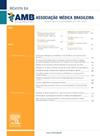Comments on "Assessment of pain and quality of life in patients undergoing cardiac surgery: a cohort study".
IF 1.3
4区 医学
Q2 MEDICINE, GENERAL & INTERNAL
引用次数: 0
Abstract
First, Viana et al. 1 evaluated postoperative pain and quality of life in patients undergoing median sternotomy (via comparisons in a cohort study). However, while comparing outcomes, it is important to present the clinical relevance of the differences found because the p-value shows only a statistical observation related to an alpha error probability 2,3 . Classical statistical significance is still the predominant way to analyze cohort studies, but clinical significance analysis has been slowly incorporated into the analysis of health-related studies. Statistical significance does not assure that the results are clinically relevant. The dichotomy that emerged from hypothesis testing 4 , namely, the decision to accept or reject the null hypothesis based on the predetermined levels of probability 5 does not provide any insights into whether the results of the study are important for patients, clinicians, or decision-makers, limiting the value of the tests in the world of evidence-based practice 4,6,7 . It can be solved by adding the effect size to the significant values (p ≤ 0.05) 8 or the minimal clinically important difference 9 of the instruments: Visual Analog Scale (VAS) 10 , Brief Pain Inventory (BPI) 11 , and World Health Organization Quality of Life Questionnaire (WHOQOL) 12 . These adjustments facilitate probabilistic reasoning in the clinical applicability of scientific evidence. Second, the authors used convenience sampling and suggested further studies with larger samples. A convenience sample is one that is drawn from a source that is easily accessible to study. This sample对“心脏手术患者疼痛和生活质量评估:一项队列研究”的评论。
本文章由计算机程序翻译,如有差异,请以英文原文为准。
求助全文
约1分钟内获得全文
求助全文
来源期刊
CiteScore
2.20
自引率
0.00%
发文量
276
审稿时长
12 weeks
期刊介绍:
A Revista da Associação Médica Brasileira (RAMB), editada pela Associação Médica Brasileira, desde 1954, tem por objetivo publicar artigos que contribuam para o conhecimento médico.

 求助内容:
求助内容: 应助结果提醒方式:
应助结果提醒方式:


